Plants for perfume
Spring produces some of the most bewitching perfumes of all. As if to lure us back outdoors and celebrate the change of seasons. Of course, it’s not really about us - as with colour, fragrance in nature is all about attracting pollinators. The aroma that comes from a crushed herb leaf stems from the plants need to deter would be insect predators.
Many of nature’s perfumes come from those original species plants that predate the art of gardening. Add modern bred cultivars to the menu and we have plenty to fill our gardens with fragrance.
There are scented plants to enjoy at every level in the garden, from ground covers and container plants to climbers and trees. Among spring’s most evocative scents are those that come from shrubs – the long-life, easy-care plants that give a garden its framework, shelter and privacy.
As a fragrant screen the evergreen magnolias and michelias are superb. Free-flowering Fairy Magnolias offer a choice of flower colours, while Michelia yunnanensis (aka Magnolia laveifolia) has attractive foliage and white scented flowers. Michelia figo (aka Port Wine Magnolia) has a powerful fruity perfume.
Also great as hedges, many of the best camellias have scent as an added virtue. The smaller leafed varieties make the most attractive hedges. One of the best is Camellia ‘Fairy Blush’. Also sweetly scented, Camellia transnokoensis works well as stand-alone specimens or trained as a hedge.
For those with larger gardens the tough and beautiful old Rugosa roses, despite their prickles, have colours and scents to relish. A favourite of these is Roseraie de l’Hay. Among the climbing roses, both modern and old, there are unlimited options for fragrant walls and pergolas.
Loved for fences walls and sturdy pergolas, leafy wisterias and clematis are a treat for all senses, their elegant chains of fragrant blossom a highlight in spring. Where there is no space to grow a large climber, wisteria can be kept pruned as small trees in a large pot. Clematis montana varieties deliver their delicate vanilla scent as the sun warms the flowers on a spring morning. Where an evergreen wall is preferred, versatile and sweetly fragrant star jasmine (Trachelospermum) is popular for good reason. It makes a great groundcover too.
When needing a scented hedge at knee or waist height we have a fabulous array of lavenders at our disposal, or the beautiful pink and white forms of Daphne Perfume Princess. The pleasure of a favourite fragrance is intensified when we plant it en masse.
Pathways, entranceways and edges offer further opportunity to plant perfume en masse. Thyme exudes its aroma when brushed or trodden on. Fragrant dianthus (aka pinks) offer both colour and fragrance for mass planting in pots or borders. Other fragrant delights to enjoy in pots or hanging baskets include the spring flowering annuals, stock, alyssum and sweet peas.
Plants for perfume
For pots, pathways and edges |
|
Alyssum |
Lobularia |
Brown boronia |
Boronia megastigma |
Daphne |
Daphne |
Dianthus, Pinks, Carnations, Sweet William |
Dianthus |
Lavender |
Lavandula |
Rosemary |
Rosemarinus |
Stock |
Matthiola |
Thyme |
Thymus |
For screening, shelter and tall hedges |
|
Camellia |
Camellia (some) |
Fairy Magnolia, Michelia |
Magnolia (evergreen) |
Karo |
Pittosporum crassifolium |
Lilac |
Syringa |
Rugosa roses (and other large shrub roses) |
Rosa |
Tarata, lemonwood |
Pittosporum eugenioides |
Trees and large shrubs for seasonal highlights |
|
Apple blossom |
Malus |
Camellia |
Camellia (some) |
Cherry blossom |
Prunus |
Fairy Magnolia, Michelia |
Magnolia |
Golden chain |
Laburnum |
Lilac |
Syringa |
Lemon myrtle |
Backhousia citriodora |
Mock orange |
Philadephus |
Edgeworthia, Money bush, yellow daphne |
Edgeworthia papyrifera |
Orange |
Citrus |
Rhododendron |
Rhododendron (some) |
Vanilla tree |
Azara |
Viburnum |
Viburnum burkwoodii (and other deciduous varieties) |
Wintersweet |
Chimonanthus |
Witch hazel |
Hamamelis |
Walls and pergolas |
|
Climbing roses |
Rosa |
Golden chain |
Laburnum |
Montana clematis, Anemone clematis |
Clematis montana |
New Zealand clematis, Pōānanga, Pikiarero |
Clematis forsteri and C. foetida |
New Zealand jasmine, Kaihua |
Parsonsia |
Star Jasmine |
Trachelospermum |
Sweet peas |
Lathyrus odoratus |
Wisteria |
Wisteria |
Highly fragrant roses |
|
Albertine |
Old fashioned rambler, pink |
Aotearoa |
Modern picking rose, pink |
Belle Poitevine |
Old rugosa rose, pink |
Blackberry Nip |
Modern picking rose, pink |
Blanc Double de Coubert |
Old rugosa rose, white |
Lamarque |
Old fashioned climber, creamy white |
Madame Alfred Carriere |
Old fashioned climber, white |
Madame Hardy |
Old shrub rose, pure white |
Madame Isaac Pereire |
Old fashioned climber, deep pink |
Margaret Merril |
Modern picking rose, white |
Roseraie de l’Hay |
Old rugosa rose, rich purple |
Sombreuil |
Old fashioned climber, white |
Utersen |
Modern climber, hot pink |
William Shakespeare |
English bush rose, deep purple |
Zephrine Drouhin |
Thornless climber, bright pink |
TIPS:
- Give highly fragrant plants a space of their own, to avoid clashes of competing perfumes.
- Locate perfumed plants in the shelter of fences and hedges, where their scents will linger longer. Warmer temperatures trigger the release of more perfume.
- Plant fragrant shrubs under bedroom windows, around pathways and entranceways.
- If a fragrant shrub is not much to look at, mix it with more eye-catching shrubs.
- One large shrub may fill the entire garden with perfume, but when it comes to little plants, you need to plant lots. Cram pots and borders with the likes of scented dianthus, alyssum and sweet peas.
FUN FACTS:
- Once they have been pollinated, many flowers stop producing fragrance, to save their energy for other functions and direct pollinators to other flowers.
- Different pollinators like different scents. The sweet scents we humans enjoy are also attractive to bees and butterflies, while flies, beetles and ants are drawn to flowers that smell more like rot and decay.
- Flowers that are fragrant at night are pollinated by nocturnal insects and are less likely to have bright colours.
- Plants that transport their pollen via wind or water don’t waste their energy on perfumes or colours.
- The aromas and flavours in herbs leaves are a plant's defence mechanism against leaf eating insects.
- The soft musky scent of cherry and apple blossoms is exquisite after a rain shower when the perfume molecules are carried in moist air.

15-Sep-2023
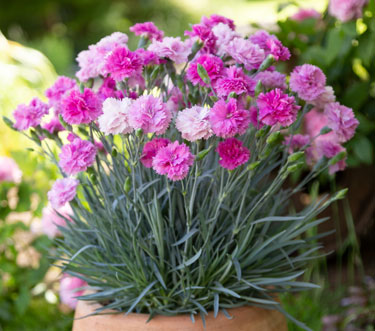
Dianthus Pink Eclipse
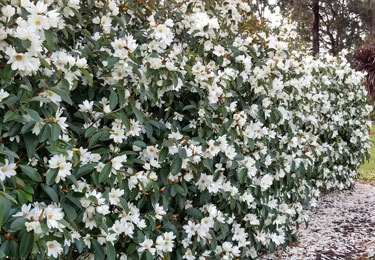
Fairy Magnolia hedge
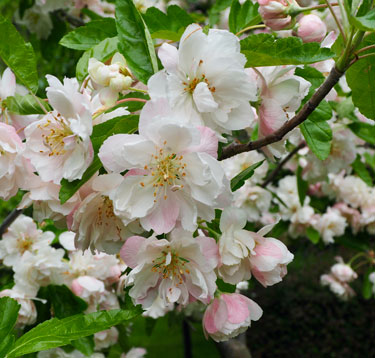
Crab apple blossom, Malus ioensis-plena

Golden Chain, Laburnum
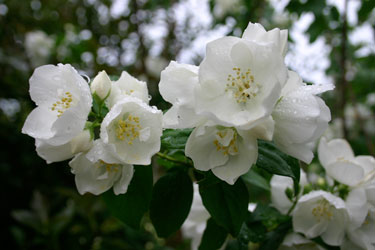
Mock Orange, Philadelpus
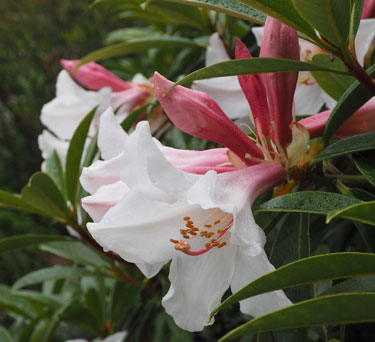
Rhododendron 'Kotuku'
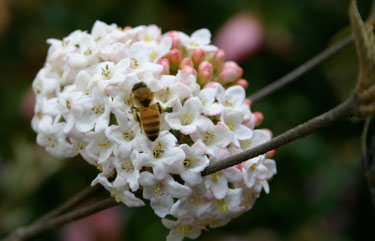
Viburnum carlesii
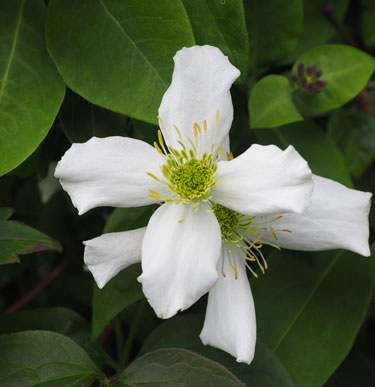
Clematis montana 'Alba'
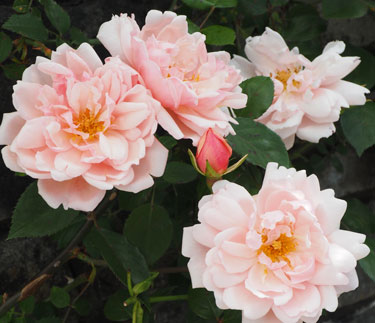
Rambling rose 'Albertine'
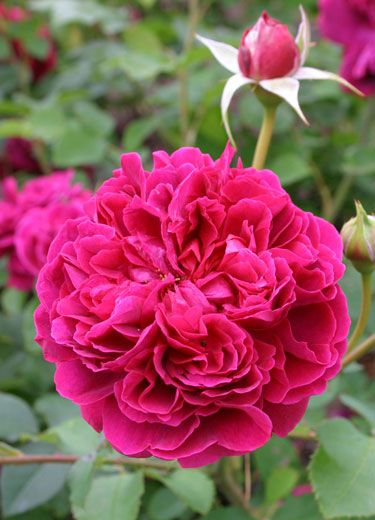
Rose 'William Shakespeare'

